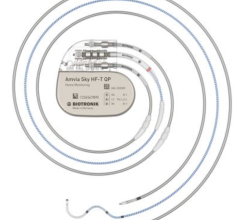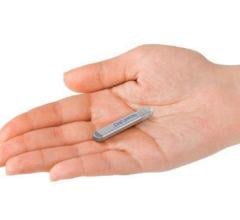
August 11, 2015 — Biotronik announced the first enrollments in the BIO|GUARD-MI1 study. The study will investigate whether the early detection of cardiac arrhythmias offered by BioMonitor, and subsequent treatments, reduce the likelihood of major adverse cardiovascular events (MACE). The study will, for the first time ever, examine patients with relatively preserved left ventricular ejection fraction (LVEF > 35 percent), who have experienced acute myocardial infarction (AMI).
BioMonitor is a leadless cardiac monitor implanted under the skin, intended to track cardiac electric activity and provide long-term remote monitoring of patients with arrhythmias. It uses Biotronik Home Monitoring for the automatic daily transmission of information on both the patient's clinical and device status.
"From previous study results, we already know just how important cardiac arrhythmia can be as an indicator of further critical events in heart patients," commented coordinating clinical investigator Christian Jons, Rigshospitalet Heart Center, Copenhagen, Denmark. "The question now, which we hope to address with the BIO|GUARD-MI study, is whether highly accurate and reliable monitoring tools like BioMonitor with Home Monitoring, can help us identify early warning signs, thereby leading to faster treatment while minimizing direct interference in patients' lives."
A previous study indicated that a cardiac arrhythmia is the most powerful predictor for a MACE in post-AMI patients who have an LVEF ≤ 40 percent. Of these patients, 20 percent experienced a major cardiovascular event within two years. From those, more than 80 percent were diagnosed with a cardiac arrhythmia before the event by using an implantable cardiac monitor. However, the patient group with a relatively preserved ejection fraction after AMI is quite large, but until now underrepresented in clinical studies. 80-90 percent of patients who survive AMI have relatively preserved ejection fraction with LVEF > 35 percent. BIO|GUARD-MI will now look at whether these patients receive similar benefits from using BioMonitor, as patients with lower LVEF.
The prospective, controlled, randomized, multicenter trial will enroll 2,900 patients in approximately 35 centers worldwide. The primary endpoint is the time from randomization to the first MACE.
For more information: www.biotronik.com


 July 11, 2024
July 11, 2024 








